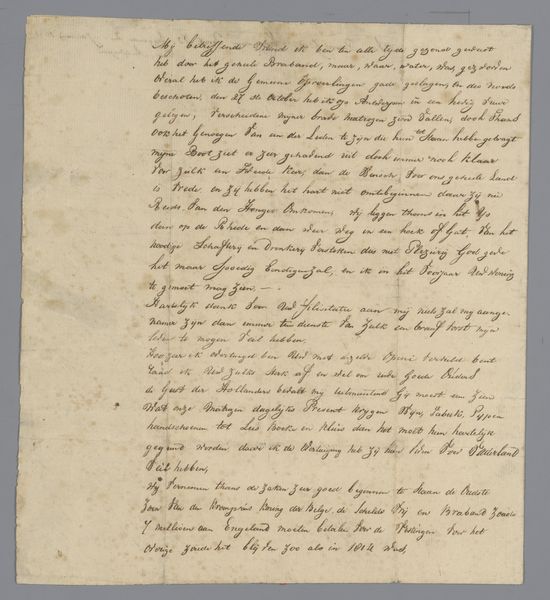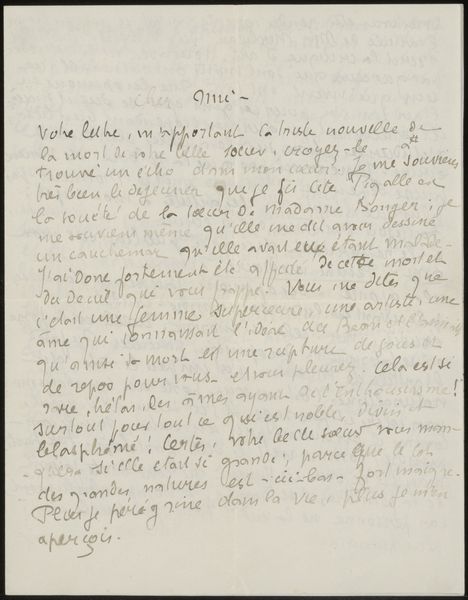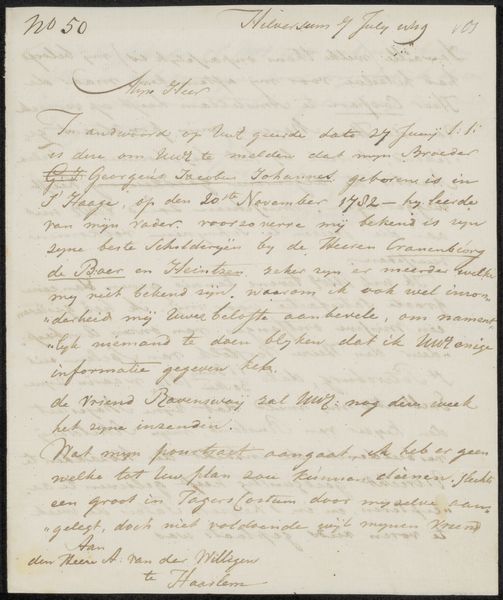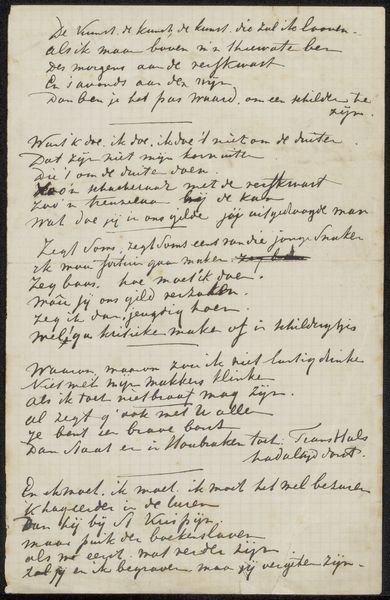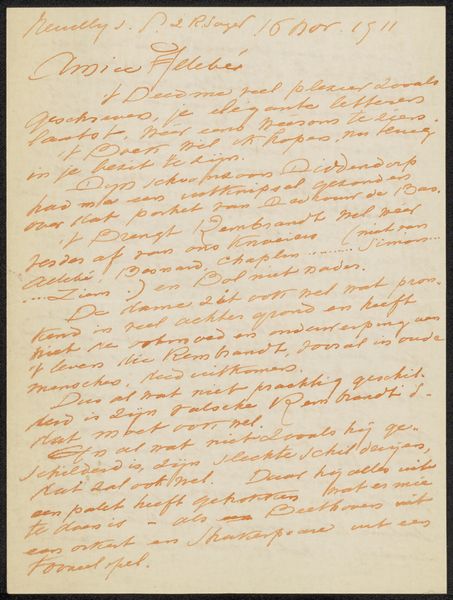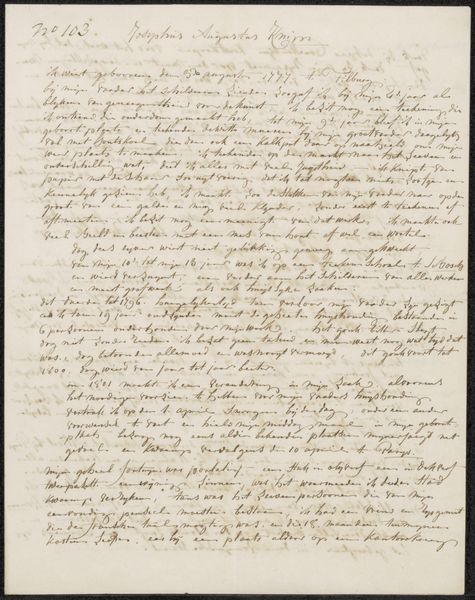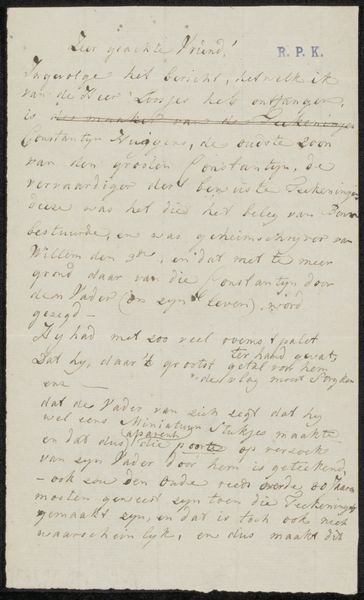
Dimensions: height 18.4 cm, width 11 cm
Copyright: Rijks Museum: Open Domain
Editor: Here we have "Secret missive from Hyde Parker, enclosed with his report" from around 1781. It's ink on paper, and it really does look like a quickly jotted-down note. There's something immediate and personal about it. What stands out to you? Curator: I'm immediately drawn to the paper itself. Look at the laid lines, the deckled edge - this wasn't mass-produced. It speaks to a specific artisanal process, to labor, and to a certain level of consumption available to someone like Hyde Parker. Editor: Interesting. So you see the materiality as significant. Curator: Absolutely. Consider the ink, too. It's not uniform; there's variation in the application, likely a quill, affecting how the script lands. That informs our understanding of its production. And how readily available was this ink to a seafaring gentleman at the time? Was it created for official documentation or for personal use? That question would reshape our understanding of the work. Editor: It feels almost like a rough draft, or something from a personal sketchbook. Curator: Precisely! But does that make it "lesser" art? By looking at the materials and production, we can challenge those traditional hierarchies between official art and the so-called "lesser" crafts or ephemera. We understand its place within Parker's specific environment of resources and making. Editor: I never thought about considering a handwritten note in terms of labor. Curator: Materiality demands that we confront that aspect. This connects directly to issues of consumption in that period too; whose labor was necessary to its making? That also contextualizes it beyond a "simple note." Editor: So by examining the paper and ink, we see the social and economic structures reflected in this single sheet. Thanks, I’ve learned a lot! Curator: My pleasure. I hope you think about how the production affects its perceived meaning.
Comments
No comments
Be the first to comment and join the conversation on the ultimate creative platform.

